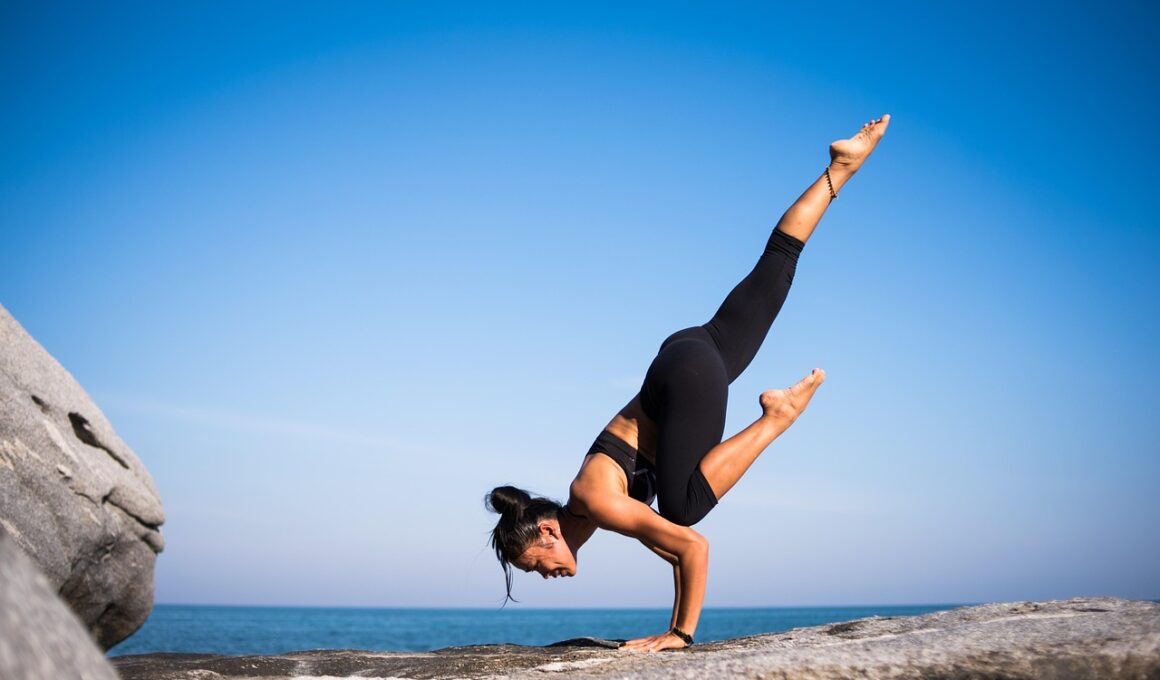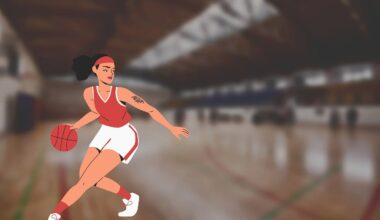Assessing and Improving Balance for Better Athletic Outcomes
Balance is an essential component of athletic performance that affects various aspects of an athlete’s ability to perform. It plays a critical role in maintaining posture, providing stability, and facilitating efficient movement in both individual and team sports. Coaches and sports professionals often overlook balance training, focusing on strength and speed improvements instead. However, balance training can significantly enhance performance-related metrics such as agility, coordination, and precision. Incorporating balance exercises into regular training routines can lead to substantial benefits in the competitive arena. To effectively evaluate balance in athletes, various assessment tools exist, ranging from simple balance tests to more sophisticated techniques involving force plates and motion capture systems. These evaluations can pinpoint areas of weakness and inform tailored training regimens, ensuring more effective interventions. Moreover, athletes with better balance are less prone to injury, which is critical in maintaining long-term athletic careers. Balance training is not solely beneficial but essential for comprehensive athlete development, allowing athletes to perform at their peak while mitigating risks associated with disorganized movements and unexpected bodily demands during competitions.
Understanding Balance Types in Sports
To fully assess and improve balance in athletes, it’s vital to understand the different types of balance that influence performance. These can be categorized into static balance, dynamic balance, and functional balance. Static balance requires maintaining a stable position when stationary, crucial during tasks like shooting in basketball or holding a yoga pose. Dynamic balance involves maintaining stability while moving, essential in sports like soccer or track and field. Functional balance incorporates both static and dynamic elements applied in real-life athletic situations. Given these distinctions, coaches should employ specific training techniques suited to each balance type. By identifying the balance requirements of particular sports, training protocols can be developed that focus on tailored exercises. This could include using balance boards, stability balls, or proprioceptive training routines designed to challenge an athlete’s balance system. Understanding these different balance types enables more targeted assessments and training, connecting the training process directly to the sport’s demands. Consequently, this leads to enhanced performance and reduced injury rates across a range of athletic disciplines. Balance training should be a constant component in the athlete’s training regimen to optimize overall performance.
Balance training can take many forms, contributing to both physical and mental readiness among athletes. Implementing various exercises that challenge balance can improve not only physical capabilities but also mental focus which contributes to better decision-making under pressure. Activities like single-leg stands, balance beam exercises, and Tai Chi promote effective balance while enhancing proprioception. Additionally, integrating technology into training routines, such as using balance testing equipment or virtual reality systems, can provide real-time feedback for athletes, allowing them to adjust their movements instantaneously. This feedback loop empowers athletes to understand their limitations and strengths, fostering a proactive approach to their training regimen. Engaging in balance-enhancing activities also boosts confidence in athletes, as they become adept at controlling their bodies during high-stakes moments in competitions. As familiarity with these exercises grows, athletes find themselves able to perform optimally without hesitation. Therefore, the cross-section of physical and cognitive training in balance optimization caters to all facets of sports performance. Coaches should consistently promote balance exercises to establish a comprehensive and adaptable athletic profile among their teams and athletes.
Incorporating Balance Training into Routines
Incorporating balance training into daily routines allows athletes to enjoy a holistic approach to performance enhancement. Coaches can start slowly, introducing simple balance exercises that gradually increase in complexity. Simple routines such as lunges, squats, and reaching exercises can be modified to include balance elements. Athletes can engage their core and utilize visual or auditory cues to stay focused. As their skills develop, introducing unstable surfaces like balance boards or foam pads can push their limits. Moreover, group sessions can foster camaraderie while enhancing balance capabilities through peer interaction. Training with partners or group members helps in developing competitive spurts where athletes challenge each other, igniting motivation. Setting goals for balance performance within these sessions can also provide measurable outcomes, encouraging athletes to strive for continuous improvement. It’s vital to ensure that balance training aligns with athletes’ overall conditioning programs. Doing so provides a means to assess the progress of balance performance steadily, creating an environment focused on measurable and continuous improvement. Continuous evaluations ensure that athletes remain aware of their balance capabilities and can adjust training regimens accordingly. This systematic approach to integrating balance training highlights its critical role in achieving optimal athletic performance.
Finally, the final phase of balance training should focus on progressive overload and functional application. Velocity or speed variations can be introduced to mimic accelerated movements that might occur in a game, thereby enhancing reactive stability. Athletes must engage in sport-specific movements that require them to adapt their balance strategies on-the-fly. Training methodologies like plyometrics or agility drills, which incorporate rapid changes in direction, can simulate real-game scenarios. Performing these drills in a controlled manner allows athletes to hone their balance skills while ensuring they are ‘game-ready’. Stressing balance in high-energy conditions pushes athletes’ limits, creating resilience in their balance systems. Furthermore, consistency in applying these methods in practice creates automatic responses that athletes can rely on during competitions. This routinely practiced muscle memory builds up the necessary adaptive balance responses, increasing overall confidence under pressure. Continuous assessment and modifications ensure the athlete advances through their training in balance, nurturing their growth as a capable performer. As athletes refine these skills, they not only improve balance but also enhance their performances in various athletic tasks. Coaches are encouraged to document and celebrate these improvements, providing further motivation.
The Future of Balance Training in Sports
The future of balance training in sports is poised to transform with advancements in technology and sports science. Innovations such as wearable devices tracking an athlete’s balance metrics in real-time could revolutionize training methodologies. This data-driven approach enables personalized training regimens tailored to individual athletes’ needs, guaranteeing effective interventions that maximize performance outcomes. Emerging research indicates an increasing focus on integrating mental training alongside physical balance exercises, emphasizing the mind-body connection. Athletes who engage in mindfulness and visualization techniques report improved balance and heightened awareness during performances. In addition, cross-disciplinary collaborations among coaches, sports scientists, and physiotherapists are likely to become more common, yielding comprehensive training solutions that address performance needs holistically. Future balance training may also leverage virtual reality environments to create interactive and engaging exercises. Such immersive experiences can challenge athletes in novel ways while providing instant feedback on their performance. As these innovations become mainstream, athletes will benefit from more effective and diversified training methodologies targeting balance optimization. Coaches should remain adaptable and open to these advancements, ensuring that their training approaches reflect the best available knowledge to maximize athlete potential.
In conclusion, assessing and enhancing balance is paramount for achieving optimal athletic outcomes. Understanding the various types of balance allows for targeted training approaches, fostering improvement through a variety of exercises. The integration of balance training into everyday routines empowers athletes to develop a robust athletic profile with reduced injury risks. As technology and research evolve, balance training will continue to refine its methodologies, utilizing innovative assessments and techniques. Coaching should adapt to these changes, focusing on holistic development through both physical and cognitive elements of training. With a strong emphasis on balance, athletes can enhance their performance capabilities, preparing them to rise to the challenges of their respective sports. By continuously evaluating and progressing training routines, athletes are likely to achieve greater heights in performance. The collaborative efforts among professionals in the sports community can elevate the standards of balance training. Therefore, prioritizing balance training signifies commitment to fostering peak performance in athletes. In this ever-evolving arena, athletes who embrace these concepts will undoubtedly become the competitive edge in their sports disciplines.


